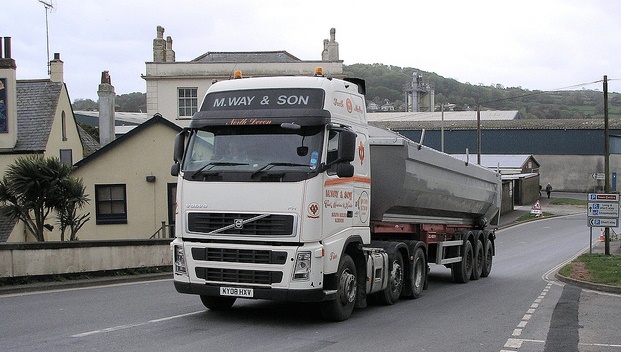Volvo is a world renowned brand for 3D printing, known for its safety standards. The company is based out of Gothenburg, Sweden and is owned by AB Volvo. Currently Volvo is the world’s second largest heavy-duty truck brand. The company produces and sells more than 100,000 units every year.
Generally, the manufacturing and assembly tools used to build Volvo trucks have to be tough and efficient. For the same reason, Volvo Trucks is now producing more than 30 tools using Stratasys additive manufacturing, thereby slashing the tool turnaround time by more than 94%. These tools were previously produced in metal using traditional manufacturing methods. According to Pierre Jenny, manufacturing director at Volvo Trucks’ engine production facility in Lyon, France, “The time required to design and manufacture the parts has been cut from 36 days to just two days using additive manufacturing with the Stratasys Fortus 3D Production System and ABSplus thermoplastic material.”
Adopting 3D printing technology helped Volvo bring down the delivery times. Jenny estimates that the all-in cost of 3D printing ABS thermoplastic items is as little as $1.13 per 0.06 cubic inches whereas the same item costs $113 per 0.06 cubic inches if made from metal. This is applicable where customized or small quantities of tools are required.
“Stratasys 3D printing has made an incredible impact to the way we work,” Jenny said. “The capability to produce a virtually unlimited range of functional tools in such a short time frame is unprecedented and enables us to be more experimental and inventive to improve production workflow.”
“We’re working in the heavy-industry sector, so reliability is naturally critical. So far every piece that we have 3D printed has proved to be 100% fit-for-purpose,” said Jean-Marc Robin, Technical Manager, Volvo Trucks. “This is crucial from a practical aspect, but also instils trust among operators and quashes any traditional notion that everything has to be made from metal in order to function properly.”
According to Robin, developing production tools using additive manufacturing also enables the equipment design team to be far more responsive and avoids possible waste in the event of last-minute design changes before tools are made.
“The fast and cost-effective nature of additive manufacturing means that we are far less restricted than we were even six months ago, allowing us to constantly improve our processes,” Robin said. “We now have operators approaching our 3D print team with individual requests to develop a custom clamp or support tool to assist with a specific production-line issue they might be having. From a time and cost perspective, this is unimaginable with traditional techniques. Additionally, in the rare case that the design specifications of a traditionally-manufactured metal tool were inaccurate, the lengthy and costly design and manufacturing process had to begin again. With a 3D printed part, we can simply alter the design specifications and re-3D print the piece in a few hours.”
Volvo Trucks’ Lyon engine plant produces various engine types and sizes for the Volvo Group, including Renault Trucks, which the Group bought in 2001.
